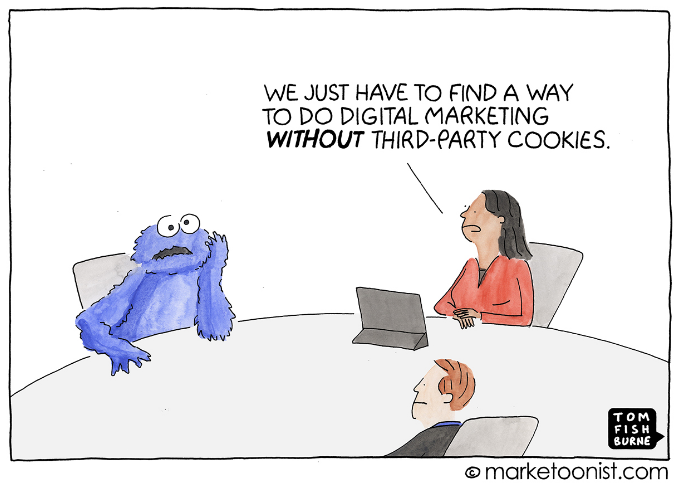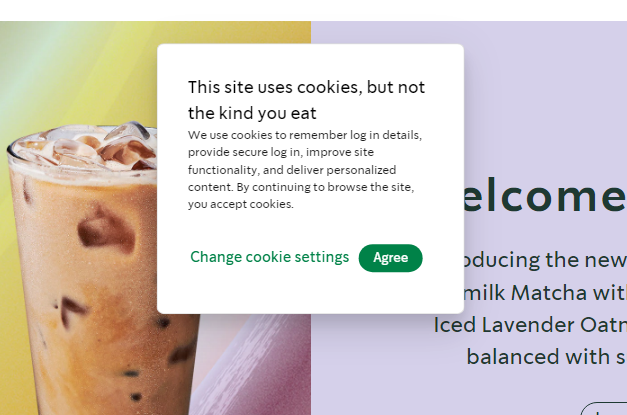The option to use third-party cookies is coming to an end and marketers will have to embrace cookieless marketing. Firefox and Safari have already gotten rid of third-party cookies, and Google is starting this year with a phased rollout for depreciation. So, what does this mean for digital marketing and how can industry pros adapt?
Keep reading for some insights on marketing without cookies.

What are cookies anyway and where are they going?
Third-party cookies are little bits of code that brands use to track audience movement online. They collect vital pieces of data on users as they browse the internet. The types of cookies that are internal for your brand and integral to running your website are staying, and these are often called “required cookies.” However, third-party cookies that are used for some types of tracking are being eliminated, leading professionals into what’s been dubbed “cookieless marketing.”
As online privacy has become a focal point, third-party cookie deprecation will help brands and search engines stay compliant with privacy laws including the California Consumer Privacy Act and the General Data Protection Regulation (GDPR) from the EU. While there is no official U.S. federal act yet, it will likely be voted into law within the next few years.
You have probably seen brands offering opportunities to opt-in, opt-out or customize tracking settings. This is how brands allow consumers a way to control which types of cookies are used during the browsing experience.

What does this mean for digital marketers?
Marketing without cookies will go hand-in-hand with cookieless attribution. As Neil Patel explains, cookieless attribution will help brands collect important tracking data and metrics, while protecting user anonymity. Strategies include collecting web traffic sources, conversion and other metrics through technology such as server-side tracking and device fingerprinting.
With cookieless marketing, brands will need to rely on first-party data, which is information collected by the brand itself directly from the customer. This could be basic information including name, email, mailing address, as well as order history, customer service call information and more. This year, we can expect to see more brands embracing the collection and leveraging of first-party data because of the near-term need for cookieless marketing.
Best practices for cookieless marketing strategy
Marketing without cookies will be new for some brands. Here are some best practices to employ:
Leverage first-party data – This is going to be absolutely key in marketing without cookies. First-party data, or data that the customer willingly and openly provides, will need to be collected, stored and then appropriately leveraged. This means your brand needs to have a customer relationship management (CRM) tool ready to make use of this valuable information.
Choose the right CRM – With the importance of first-party data becoming abundantly clear, investing in the right CRM will help brands make the most of the information shared by customers. CRMs come in a variety of sizes and capabilities, so companies will need to determine what they need and then research the best options.
Target research – Get to know more about your target audience including drivers and pain points. This can help you not only create a marketing message that speaks to your audience but develop personas and lookalike customer criteria for marketing purposes.
Use other metric collection techniques – As noted above, marketing without cookies means brands will need to deploy other technology solutions such as server-side tracking and device fingerprinting to help observe customer actions.
Create custom reports in GA4 – GA4 is already in full swing and there are tons of opportunities to slice and dice data, as well as create custom reports, to help get actionable insights to develop marketing strategies and audience profiles. Be sure to dive into all of GA4’s capabilities when forming your cookieless marketing strategy.
Driving results with cookieless marketing
The third-party cookie is going away, there’s no doubt about it. From leveraging first-party data to embracing other technology tools, there are many ways to create successful campaigns without third-party cookies. Brands that want to keep momentum in marketing efforts will need to embrace strategies for marketing without cookies to drive results and stay connected with customers.
Reach out to Beyond Fifteen and learn how we can help with your cookieless marketing strategy!
